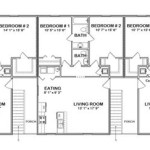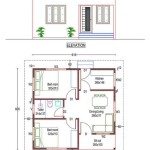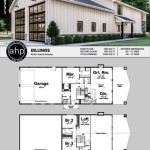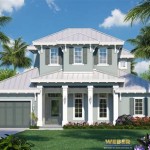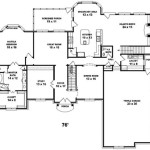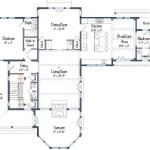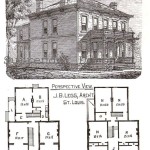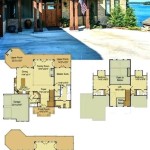Home Plans for Sloping Land: Navigating Challenges and Maximizing Potential
Sloping blocks of land present unique challenges for homeowners and builders. While a flat, even plot might seem like the ideal canvas for construction, sloping land can offer distinct advantages, including enhanced views, improved drainage, and unique architectural opportunities. Successfully building on a slope, however, requires careful planning, specialized design considerations, and an understanding of the various home plans that can effectively utilize the terrain. This article explores the intricacies of home plans for sloping land, examining the key design principles, common plan types, and the factors that influence the ultimate aesthetic and functionality of a hillside home.
Understanding the Challenges and Advantages of Sloping Land
Before delving into specific home plan types, it's crucial to acknowledge both the challenges and advantages that sloping land presents. Challenges primarily revolve around issues related to stability, accessibility, and cost. Excavation and foundation work tend to be more complex and expensive on slopes, often necessitating retaining walls to manage soil erosion and provide structural support. Access to the site can also be difficult, requiring specialized equipment and careful planning for material delivery. Drainage is another critical concern; improperly managed runoff can lead to flooding, soil instability, and damage to the foundation.
Despite these challenges, sloping land offers several compelling advantages. One of the most significant benefits is the potential for breathtaking views. Elevated positions often provide panoramic vistas that would be impossible to achieve on a flat lot. Furthermore, the natural slope can be incorporated into the design to create distinct living spaces on different levels, maximizing privacy and functionality. Properly designed sloping land homes often enjoy better natural light and ventilation due to their elevated positioning and exposure to prevailing winds. The unique topography also lends itself to creative landscaping opportunities, allowing for the creation of terraced gardens, rockeries, and other visually appealing features.
Key Design Considerations for Sloping Block Homes
Designing a home for sloping land demands a different approach than designing for a flat site. Several key considerations must be carefully addressed to ensure structural integrity, functionality, and aesthetic appeal. These include foundation design, site orientation, drainage management, and accessibility planning.
Foundation Design: The foundation is arguably the most critical element of a sloping block home. Traditional slab-on-grade foundations are rarely suitable, and alternative foundation types such as pier and beam, split-level, or cantilevered designs are typically required. Pier and beam foundations involve supporting the structure on concrete or steel piers driven deep into the ground, providing stability and allowing for air circulation beneath the house. Split-level foundations step down the slope, creating multiple levels that follow the natural contours of the land. Cantilevered designs extend portions of the house beyond the support structure, creating dramatic overhangs and maximizing views. Careful geotechnical investigation is essential to determine soil composition and stability, informing the selection of the most appropriate foundation type.
Site Orientation: The orientation of the house on the slope is crucial for maximizing solar gain, natural light, and ventilation. Optimizing the building's position relative to the sun can significantly reduce energy consumption for heating and cooling. Ideally, the main living areas should be oriented towards the north (in the southern hemisphere) or south (in the northern hemisphere) to capture passive solar heat during the winter months and minimize heat gain during the summer. Consideration should also be given to prevailing winds, ensuring that the house is positioned to take advantage of natural ventilation and minimize exposure to strong winds. Strategic placement of windows and shading devices can further enhance energy efficiency.
Drainage Management: Effective drainage is essential to prevent water damage and soil erosion on sloping blocks. A comprehensive drainage plan should be developed to manage surface runoff and groundwater. This may involve installing retaining walls, swales, French drains, and other drainage systems to divert water away from the foundation and prevent saturation of the soil. Proper grading of the site is also important to ensure that water flows away from the house. The drainage plan should be designed in accordance with local building codes and regulations and should be regularly inspected and maintained to ensure its effectiveness.
Accessibility Planning: Accessibility is another crucial consideration, particularly for homeowners with mobility limitations or those planning for aging in place. Stepped access can be challenging for some individuals, and alternative solutions such as ramps, elevators, or sloped walkways may be necessary. The design should also consider the accessibility of outdoor spaces, ensuring that pathways and gardens are easily navigable. Universal design principles should be incorporated to create a home that is accessible and comfortable for all occupants, regardless of their abilities.
Common Home Plan Types for Sloping Land
Several home plan types are particularly well-suited for sloping land, each offering unique design solutions and aesthetic characteristics. These include split-level homes, hillside homes with walkout basements, and stilt houses. The selection of the most appropriate plan type depends on the specific characteristics of the site, the homeowner's preferences, and the budget.
Split-Level Homes: Split-level homes are designed to step down the slope, creating multiple levels connected by short flights of stairs. This design approach minimizes excavation and allows the house to follow the natural contours of the land. Split-level homes typically feature a main living area on one level, bedrooms on a separate level, and a garage or recreation room on another level. This type of home offers good separation of living spaces and can be relatively cost-effective to build on sloping land.
Hillside Homes with Walkout Basements: Hillside homes with walkout basements integrate the lower level into the landscape, creating a seamless transition between indoor and outdoor living spaces. The basement level is typically partially or fully exposed on the downhill side, allowing for natural light and direct access to the yard. This design approach maximizes usable living space and provides opportunities for creating entertainment areas, guest suites, or home offices. The walkout basement also provides easy access for maintenance and repairs.
Stilt Houses: Stilt houses are elevated above the ground on piers or stilts, minimizing disturbance to the natural terrain and providing protection from flooding. This design approach is particularly well-suited for steep slopes or areas prone to flooding or landslides. Stilt houses offer excellent views and natural ventilation due to their elevated position. The space beneath the house can be used for parking, storage, or outdoor living areas. However, stilt houses can be more expensive to build than other types of homes due to the complex structural engineering required.
In addition to these common plan types, many variations and hybrid designs can be adapted to suit specific site conditions and homeowner preferences. For example, a stepped foundation can be combined with a cantilevered design to create a unique and visually striking home. The key is to work with an experienced architect or builder who understands the challenges and opportunities of building on sloping land and can develop a custom plan that maximizes the potential of the site.
Beyond the structural design, the selection of appropriate materials is crucial for sloping land homes. Durable, weather-resistant materials such as concrete, stone, and steel are often preferred for foundations and retaining walls. Low-maintenance siding materials, such as fiber cement or composite cladding, can help to minimize upkeep and extend the lifespan of the house. Sustainable building materials, such as reclaimed wood and recycled metal, can also be incorporated to reduce the environmental impact of the project.
Landscaping plays a vital role in enhancing the aesthetic appeal and functionality of a sloping block home. Terraced gardens can create visual interest and provide level areas for outdoor living. Retaining walls can be used to create raised planting beds and prevent soil erosion. Native plants are particularly well-suited for sloping sites, as they are adapted to the local climate and soil conditions and require minimal maintenance. Proper landscaping can also help to improve drainage and stabilize the soil, further protecting the foundation and preventing water damage.
Building a home on sloping land requires careful planning, specialized design considerations, and a thorough understanding of the challenges and opportunities that the terrain presents. By working with experienced professionals and carefully considering the factors outlined in this article, homeowners can create a beautiful and functional home that maximizes the potential of their unique site.

Sloped Lot House Plans With Walkout Basements At Dream Home Source Unique Modern Architecture

Home Designs For Sloping Blocks Mark Lawler Architects

A Guide To Sloping Lot House Plans

Sloping Block House Designs Upward Downward Split Level

Building On A Sloping Block Here S What You Need To Know Hepner Homes

Plan 51696 Traditional Hillside Home With 1736 Sq Ft 3 Be

Sloping Lot Contemporary Style House Plan 1100 Sundown

Impressive 23 Sloping Block Homes Designs For Your Perfect Needs Jhmrad Lot House Plan Townhouse Design

Building On A Sloping Block

Home Designs For Sloping Blocks Mark Lawler Architects

